2023 in Review
No replays 😊
In order finished
In order finished
193 Games
The Far Cry Elden Ring-ification of Breath of the Wild with a smattering of end-of-chapter Fortnite and New Funky Mode.
While BotW was content to let players roam free in a sprawling world, Tears of the Kingdom reins in this freedom considerably and hides the guardrails from the player with horse blinders. Link is still welcome to run around Hyrule at will, but the primary storyline holds the keys which allow actual exploratory liberation. My first dozen hours completely ignored Lookout Landing, leaving me without critical tools like the paraglider and towers. That was the most challenging TotK ever got, and the most it (unintentionally) forced me to think outside the box. I dragged gliders to the tops of hills labouriously, I used a horse and cart, I made elaborate vehicles simply to get around. I scrounged for rockets, fans, batteries, and air balloons to ascend to sky islands, making it to a few of the lower ones with great accomplishment. I committed to putting off the towers as long as I could, not realising they were an outright necessity. Seeing how this additional layer of the map functioned demystified it severely, rendering a challenge into a stepping stone for parcels of content.
The depths, like the skies above, are filled with potential. Many of its spaces are similarly wide open to encourage blind exploration with vehicles. Only there is nearly no purpose to any of it. Lightroots are a checkbox which dismantle the most compelling part of the depths -- their darkness. The depths are a place you visit to grab zonaite or amiibo armour and leave. As the Fire Temple is within the depths, and it being the first I tackled, I falsely believed there would be more dungeons strewn about below, simply a part of the world rather than instanced away from it. Sadly, it is the exception.
The other temples are obfuscated and inaccessible without their related storylines, which is itself fine (the temples are impossible to progress through without their associated power anyways) but this leaves the world feeling more boxed in, a selection of rooms in an overly-long hallway. A spare few rooms complement each other, most of them do not. The walls of the rooms must be thick. Whether it is shrines, side quests, or temples, the developers yet again seemingly have no way of knowing what abilities the player might have, what puzzles they have encountered, what skills they remember. All that they know is that in the Fire Temple, you have a Goron. In the Water Temple, you have Zora armour. The positive is, of course, that these things can thus be tackled in any order without a fear of missing out on anything. The downside is that there is never anything more to a shrine, a temple, or anything than what the player encounters the first go around. There is no impetus to return to a location when you have a better tool, or a wider knowledge of how the game's mechanics work. You show up, experience the room, and leave. With 300 map pins at your disposal, and similar issues arising in BotW, there's a sense that the developers chickened out near the end, too afraid to let the player (gasp) backtrack or (gasp) miss out.
Ironically enough, the lack of FOMO is what I miss most. When I was towerlessly exploring with a hodgepodge of trash scavenged from around the world, I felt free. I felt clever! When I discovered the intended mode of play, however, I felt I was putting a square peg in a square hole. There's a crystal that needs to be moved to a far away island? Before, I might have made a horror of Octoballoons and Korok Fronds with Fans and Springs to get it where it needed to go. When the Fruit of Knowledge was consumed, I saw the parts for the prebuilt Fanplane were right next to the Crystal. There's a breakable wall in a dungeon? Bomb Flowers or a hammer are right there. It is incredibly safe. It is a pair of horse blinders that you can decorate as you please. Go ahead and make your mech, you are still on the straight and narrow path.
TotK tries to bring back the linearity of Zeldas past within the BotW framework, but it ignores that the linearity was speckled with a weave of areas which expanded alongside your arsenal, rather than shrinking. Everything here is incongruous, a smörgåsbord of cool set pieces that simply don't go together. There is too much content (Elden Ring) that is too self-contained (end of chapter Fortnite) and too afraid that you will not experience it (New Funky Mode).
Did I have fun? Yes. But I had to make it myself.
While BotW was content to let players roam free in a sprawling world, Tears of the Kingdom reins in this freedom considerably and hides the guardrails from the player with horse blinders. Link is still welcome to run around Hyrule at will, but the primary storyline holds the keys which allow actual exploratory liberation. My first dozen hours completely ignored Lookout Landing, leaving me without critical tools like the paraglider and towers. That was the most challenging TotK ever got, and the most it (unintentionally) forced me to think outside the box. I dragged gliders to the tops of hills labouriously, I used a horse and cart, I made elaborate vehicles simply to get around. I scrounged for rockets, fans, batteries, and air balloons to ascend to sky islands, making it to a few of the lower ones with great accomplishment. I committed to putting off the towers as long as I could, not realising they were an outright necessity. Seeing how this additional layer of the map functioned demystified it severely, rendering a challenge into a stepping stone for parcels of content.
The depths, like the skies above, are filled with potential. Many of its spaces are similarly wide open to encourage blind exploration with vehicles. Only there is nearly no purpose to any of it. Lightroots are a checkbox which dismantle the most compelling part of the depths -- their darkness. The depths are a place you visit to grab zonaite or amiibo armour and leave. As the Fire Temple is within the depths, and it being the first I tackled, I falsely believed there would be more dungeons strewn about below, simply a part of the world rather than instanced away from it. Sadly, it is the exception.
The other temples are obfuscated and inaccessible without their related storylines, which is itself fine (the temples are impossible to progress through without their associated power anyways) but this leaves the world feeling more boxed in, a selection of rooms in an overly-long hallway. A spare few rooms complement each other, most of them do not. The walls of the rooms must be thick. Whether it is shrines, side quests, or temples, the developers yet again seemingly have no way of knowing what abilities the player might have, what puzzles they have encountered, what skills they remember. All that they know is that in the Fire Temple, you have a Goron. In the Water Temple, you have Zora armour. The positive is, of course, that these things can thus be tackled in any order without a fear of missing out on anything. The downside is that there is never anything more to a shrine, a temple, or anything than what the player encounters the first go around. There is no impetus to return to a location when you have a better tool, or a wider knowledge of how the game's mechanics work. You show up, experience the room, and leave. With 300 map pins at your disposal, and similar issues arising in BotW, there's a sense that the developers chickened out near the end, too afraid to let the player (gasp) backtrack or (gasp) miss out.
Ironically enough, the lack of FOMO is what I miss most. When I was towerlessly exploring with a hodgepodge of trash scavenged from around the world, I felt free. I felt clever! When I discovered the intended mode of play, however, I felt I was putting a square peg in a square hole. There's a crystal that needs to be moved to a far away island? Before, I might have made a horror of Octoballoons and Korok Fronds with Fans and Springs to get it where it needed to go. When the Fruit of Knowledge was consumed, I saw the parts for the prebuilt Fanplane were right next to the Crystal. There's a breakable wall in a dungeon? Bomb Flowers or a hammer are right there. It is incredibly safe. It is a pair of horse blinders that you can decorate as you please. Go ahead and make your mech, you are still on the straight and narrow path.
TotK tries to bring back the linearity of Zeldas past within the BotW framework, but it ignores that the linearity was speckled with a weave of areas which expanded alongside your arsenal, rather than shrinking. Everything here is incongruous, a smörgåsbord of cool set pieces that simply don't go together. There is too much content (Elden Ring) that is too self-contained (end of chapter Fortnite) and too afraid that you will not experience it (New Funky Mode).
Did I have fun? Yes. But I had to make it myself.
Wonder Flower gimmicks are cute until they turn repetitious, which they do by the end of World 2. The badges largely make up for a lack of platforming aptitude which, as a seasoned gamester, means I have to play the game wrong to accommodate their use. But I'm not gonna unlearn my Mario skills so I don't remember to use them outside of when they are clearly necessary for side objectives like an over-polished immsim. You mean I should use the Dolphin badge on the levels right after I got it? Wowee Zowee!
Broadly speaking this feels like an attempt to teach the kids that grew up with the Switch what Mario is about. The hypersleek UI elements, mountains of spoken text as a replacement for other markers of design intent, the badges, the Wowee Zowee, the oodles of characters, the gacha elements of the standees, the multiple currencies (and decimalisation of Flower coins to further litter the field with shinies), the little emojis, the lack of points. These additions and subtractions are by no means bad but I won't lie, it feels a little like I'm playing a AAA game from the 2020s. Because I am. It's hard to read Wonder as a creative reinvention and reinvigoration of Mario because I know it took thousands of people to make this. That every decision was subject to board meetings and focus groups. It's the same problem as your New Super games -- the formula must be adhered to. And even if the formula changes, it's still a formula. Nothing wrong with that, but it's not what I look for at this point in my life.
I'll keep playing it, I'll probably finish it. It's like a Coca-Cola Creation, y'know? You see it on the shelf, you think 'what the hell do '+XP' or 'Starlight' taste like, the first sip is novel and enchanting, before long you're still drinking Coke. If I want true innovation, I'll reach for the local-made can of kombucha flavoured with some berry I've never heard of before. Like Haskap. Uhhh, for the purposes of this analogy I guess the random shit I pick up on Steam and itch.io are the kombucha.
And I gotta say, I'm sorry but I can't hear the Mario Gang say Wowee Zowee without having flashbacks to Game Grumps Kirby Super Star Part 2 where Jon and Arin argued for like a minute straight over whether or not Arin had said Wowee Zowee before. Back then life was so simple. I was so young. Games held so much potential. Eleven years, gone in the blink of an eye. In another life, I'm the Mario Wonder kid, growing up on a Switch. Who could have known things would turn out the way they did, that I'd be the person I am today...
Feels like a rebrand to cover up some controversial past half the time.
WOAH JUST LIKE GAME GRUMPS 😱
Broadly speaking this feels like an attempt to teach the kids that grew up with the Switch what Mario is about. The hypersleek UI elements, mountains of spoken text as a replacement for other markers of design intent, the badges, the Wowee Zowee, the oodles of characters, the gacha elements of the standees, the multiple currencies (and decimalisation of Flower coins to further litter the field with shinies), the little emojis, the lack of points. These additions and subtractions are by no means bad but I won't lie, it feels a little like I'm playing a AAA game from the 2020s. Because I am. It's hard to read Wonder as a creative reinvention and reinvigoration of Mario because I know it took thousands of people to make this. That every decision was subject to board meetings and focus groups. It's the same problem as your New Super games -- the formula must be adhered to. And even if the formula changes, it's still a formula. Nothing wrong with that, but it's not what I look for at this point in my life.
I'll keep playing it, I'll probably finish it. It's like a Coca-Cola Creation, y'know? You see it on the shelf, you think 'what the hell do '+XP' or 'Starlight' taste like, the first sip is novel and enchanting, before long you're still drinking Coke. If I want true innovation, I'll reach for the local-made can of kombucha flavoured with some berry I've never heard of before. Like Haskap. Uhhh, for the purposes of this analogy I guess the random shit I pick up on Steam and itch.io are the kombucha.
And I gotta say, I'm sorry but I can't hear the Mario Gang say Wowee Zowee without having flashbacks to Game Grumps Kirby Super Star Part 2 where Jon and Arin argued for like a minute straight over whether or not Arin had said Wowee Zowee before. Back then life was so simple. I was so young. Games held so much potential. Eleven years, gone in the blink of an eye. In another life, I'm the Mario Wonder kid, growing up on a Switch. Who could have known things would turn out the way they did, that I'd be the person I am today...
Feels like a rebrand to cover up some controversial past half the time.
WOAH JUST LIKE GAME GRUMPS 😱
Spongy but fun, my boyfriend says I should cosplay Pinocchio and that's stuck in my mind more than any moment of the game itself.
I like this game : )
Batman, can you solve my hardest riddle yet: a three lap time trial race?
Astonished at how much I enjoyed this considering the disdain it has harboured from many whose opinions I hold in very high regard. Its eschewing of Sans-Serif Corpo committee-design in favour of a maximal exploration of bombastic and obtuse peculiarities from the aesthetic to the mechanical warms my heart. The sincerity on display strikes a chord of 'cringe' within me less because of its actual writing content, and more because it is a contemporary parallel to the endearing, honest, whimsical edgelordiness of video games past. Neon White is the Shadow the Hedgehog, The Bouncer, Vexx, Prince of Persia: Warrior Within, Bomberman Act Zero, Dante's Inferno, Jak II, BMX XXX of the 2020s in tone, spit and polished to a shine. It forgoes the failings of mid-2000s muddy and ruddiness, where landscapes and gameplay blended into green-brown smears, and proudly proclaims that games can be capital-C cool and fun as hell. Every skip is the descendant of Ulillillia's Spyro oddities. The soundtrack is the vague memories of Ape Escape and ChainDive, the vibe the immaculate remembrance of youth. It is Lovely Planet with accuracy replaced with speed, speed, speed.
Neon White is unabashedly itself, for good and for ill.
Neon White is unabashedly itself, for good and for ill.
Wholly uncompromising in its grandiose, buckling vision. Crumbling under the weight of its world of ideas. Breakneck and glacial, confused and confusing. To call it a flawed masterpiece is an admission that it is a masterpiece all the same.
The plot is frequently limp, characters incensed by seemingly random motivations. The world folds out into eternity while railroading the Regalia to a two lane highway. The ache for reprieve from ballooning stakes goes eternally unanswered. What starts as a granting of ever more freedoms becomes a collapse of everything being taken away from the player bit by bit. An unceasing tide of fetch quests forgotten in a shift to eternal linearity. Yet none of this takes away from the experience, it only reinforces a consistent theme of loss and trade-offs.
The first playable moments bring this into laser focus. The iconic Regalia, a literal symbol of freedom carries nothing but unfulfilled promises as it is laboriously pushed across the desert. When it is repaired, Noctis receives a single opportunity to drive his steed, only to discover he is no more in control of it behind the wheel than he is as a passenger. It is often a hindrance, barely moving at night, unable to ever meaningfully approach points of interest, as manoeuvrable as a train on the tracks. Yet each time it is taken away, the notion of freedom dissipates, eventually passing forever into history. Similarly, the temporary departure of party members makes what were once mechanical nothings into tangible absence; Gladio, Prompto and Ignis all bringing something crucial yet invisible to the dynamics of the party and combat.
This typifies what the Final Fantasy XV experience is; one of dashed expectation. Chase down your MacGuffin of a betrothed only for her to fade away. Collect a litany of ingredients, lures, paint jobs, CDs, quests, hunts, medals all for it to become meaningless in an instant, no indication that the time for a relaxed approach has drawn to a close. The only fragment of a 'road trip with the boys' being memories made concrete through Prompto's photographic documentation of the journey. Much as one might scoff at an overabundance of filters, selfies, extreme angles, and inadvertent captures of Gladio's ass, these joyful glimmers of what was and could have been resonate with nostalgic depression. When our story draws to a close, all we have to remember it by are our memories. Wishes that it had gone better, not just for ourselves, but for those who would walk a doomed path.
The plot is frequently limp, characters incensed by seemingly random motivations. The world folds out into eternity while railroading the Regalia to a two lane highway. The ache for reprieve from ballooning stakes goes eternally unanswered. What starts as a granting of ever more freedoms becomes a collapse of everything being taken away from the player bit by bit. An unceasing tide of fetch quests forgotten in a shift to eternal linearity. Yet none of this takes away from the experience, it only reinforces a consistent theme of loss and trade-offs.
The first playable moments bring this into laser focus. The iconic Regalia, a literal symbol of freedom carries nothing but unfulfilled promises as it is laboriously pushed across the desert. When it is repaired, Noctis receives a single opportunity to drive his steed, only to discover he is no more in control of it behind the wheel than he is as a passenger. It is often a hindrance, barely moving at night, unable to ever meaningfully approach points of interest, as manoeuvrable as a train on the tracks. Yet each time it is taken away, the notion of freedom dissipates, eventually passing forever into history. Similarly, the temporary departure of party members makes what were once mechanical nothings into tangible absence; Gladio, Prompto and Ignis all bringing something crucial yet invisible to the dynamics of the party and combat.
This typifies what the Final Fantasy XV experience is; one of dashed expectation. Chase down your MacGuffin of a betrothed only for her to fade away. Collect a litany of ingredients, lures, paint jobs, CDs, quests, hunts, medals all for it to become meaningless in an instant, no indication that the time for a relaxed approach has drawn to a close. The only fragment of a 'road trip with the boys' being memories made concrete through Prompto's photographic documentation of the journey. Much as one might scoff at an overabundance of filters, selfies, extreme angles, and inadvertent captures of Gladio's ass, these joyful glimmers of what was and could have been resonate with nostalgic depression. When our story draws to a close, all we have to remember it by are our memories. Wishes that it had gone better, not just for ourselves, but for those who would walk a doomed path.
Holy shit just read the manual.
Just as much not-a-roguelite as Hades but Returnal knows how to make that actually work for narrative and gameplay purposes.
Total War for bozos (me).
Once you get past the pains of this not being a Tony Hawk's Pro Skater, this is incredible. The throughlines are wondrous, the tagging sublime, the music blows Future out of the water.
Utterly okay. Dusty water cup.
Holy shit just learn how the combat works.
Sonic CD so good when you don't got a bitch in your ear telling you it's labyrinthine.
When the faithful remaster is faithful.
Helped remind me why I dislike Risk of Rain 2 so much. The power fantasy is lessened here (though still extant) to the point where even won runs feel tight.
🥹 why
Impressive, not affecting.
The initial honeymoon is very strong but quickly gives way to a weak Wolfendoom propped up by wonderful aesthetics and weight. The thunk of your marine's boots, the thwack of the boltgun, the thud of your armour into an enemy, the thrill of the chainsword all mean nothing when levels are quasi-labyrinths with the same gothic coat of paint, the same enemies, the same circle-strafing.
The chainsword is cool in theory but is not as snappy as DOOM Eternal's loot granting chainsaw. The weapons feel fantastic but most of the time you can just use the boltgun and ignore everything else. The raison d'etre to charge ever forward to maintain your defenses withers away when you're locked in an arena trying to hunt down one last blue horror so you can get a key, or when you're trying to find the elevator in a sea of brown architecture. The unique models might as well not exist if they blend together or recede into the background as visual mud. It feels like playing the handheld port of a console title, the inferior (if charming) sibling to Space Marine.
The chainsword is cool in theory but is not as snappy as DOOM Eternal's loot granting chainsaw. The weapons feel fantastic but most of the time you can just use the boltgun and ignore everything else. The raison d'etre to charge ever forward to maintain your defenses withers away when you're locked in an arena trying to hunt down one last blue horror so you can get a key, or when you're trying to find the elevator in a sea of brown architecture. The unique models might as well not exist if they blend together or recede into the background as visual mud. It feels like playing the handheld port of a console title, the inferior (if charming) sibling to Space Marine.
A mistake.
A meticulous on-going negotiation between space, architecture, self-doubt, and the rigidity of systems real and imagined.
Go buy and play it. Equip your horse blinders because the store page sours things a bit.
ここでは
左側通行
⬅
Perfect tectonic representation of Japanese underground passageways afforded by advances in games graphics. The hyperreal supplants the original to the extent that, as in reality, it becomes visual noise, consumed without deliberate thought. Without knowing what The Exit 8 delivers, its call to pay attention to surroundings becomes an act of questioning minutiae and the necessary bounds of the game space. In quietly becoming familiar with the space itself, differences should become apparent, but the mind effectively second-guesses itself amid a sea of static. Occasionally it is blatant, more often fleeting as a wandering eye spot, impossible to catch within one's focus and definitively claim it to be actual.
Of course, if it really was that subtle it wouldn't be a very rewarding experience, but the learning experience is reinforced by the dread of seeing 0, an affirmation that you missed something or, more terrifyingly, misremembered something. Were the posters always in that configuration? Did the passerby look like that? How grungy was it last time?
By not repeating itself until the bag of tricks runs empty, The Exit 8 refuses to even give the player the opportunity to enter routine, to become acquainted with the unfamiliar. Even the security of 8 not a perfect shield until the assurance of leaving it behind.
Go buy and play it. Equip your horse blinders because the store page sours things a bit.
ここでは
左側通行
⬅
Perfect tectonic representation of Japanese underground passageways afforded by advances in games graphics. The hyperreal supplants the original to the extent that, as in reality, it becomes visual noise, consumed without deliberate thought. Without knowing what The Exit 8 delivers, its call to pay attention to surroundings becomes an act of questioning minutiae and the necessary bounds of the game space. In quietly becoming familiar with the space itself, differences should become apparent, but the mind effectively second-guesses itself amid a sea of static. Occasionally it is blatant, more often fleeting as a wandering eye spot, impossible to catch within one's focus and definitively claim it to be actual.
Of course, if it really was that subtle it wouldn't be a very rewarding experience, but the learning experience is reinforced by the dread of seeing 0, an affirmation that you missed something or, more terrifyingly, misremembered something. Were the posters always in that configuration? Did the passerby look like that? How grungy was it last time?
By not repeating itself until the bag of tricks runs empty, The Exit 8 refuses to even give the player the opportunity to enter routine, to become acquainted with the unfamiliar. Even the security of 8 not a perfect shield until the assurance of leaving it behind.
After playing Geograph Seal on an underclocked emulator, the framerate makes me feel nothing.
Kind of a downgrade from Rock Band Unplugged, but at least the graphics are nice.
Midwestern emo.
With no nostalgia, this was weak but the vehicles were all tremendously fun.
Nothing could have prepared me for the last third of this.
"go to hell" is basic. "i hope the developers of some of your favourite games get bought by epic and have to make subpar versions of other games so fortnite can try to compete with roblox" is smart. it's possible. it's terrifying.
How can I possibly go back after World of Warcraft Peggle.
game SUCKS i go to BED
In typical Game Freak fashion, this is technology from a decade ago being paraded around like it's cool when it's Pokemon. Accelerometers tracking your movement in the night certainly works as a means of tracking sleep, but integration with wrist trackers, smartwatches, and smart rings (and AI beds? Whatever that even means?) have allowed a greater degree of fidelity for users. Sleep as Android has been doing a damn good job of telling me I have horrible sleep hygiene for a decade, only improving with time. It has recommended ways of improving my sleep, alarms that go off only when I'm in a light sleep cycle so I'm less groggy, 'captchas' were I can only turn off my increasingly loud alarm with math, or tapping an NFC point, or shaking my phone like it owes me money. Not only am I firmly entrenched in my current sleep tracker, it has always been frictionless. I tap a widget, I put my phone beside me, I sleep.
Pokemon Sleep shows a fundamental misunderstanding of why sleep trackers are used, how they are presently used, where the market lies, and how the gamification of life actually works. This isn't Habitica or Fabulous trying to improve your life through things you don't already do. I have no choice in whether or not I sleep. The appeal of a sleep tracker is that it is set and forget, a companion for something I have to and will do anyways, so it better not be an annoying partner. If Pokemon Sleep wants the user to be concerned about the quality of their sleep, shouldn't it be able to sync up with existing hardware that can supplement its readings? If sleep is meant to be restorative, why is that rejuvenation immediately undone by tutorialisation and currencies and systems and a goddamn battle pass when I wake up? Why am I chastised when I wake that I only got 54/100 sleep points because I woke in the night and can only get 5-6 hours of sleep a night if I'm lucky? Why is the assumption that 8.5 hours of sleep is a perfect ideal for everyone to aim for? Why is there no accommodation for the peculiarities of the human sleep experience, for the insomniac, the narcoleptic, the medicated? The very least it could do is offer a sleep quiz, or a calibration period. The very least it could do is not inundate me with things I have to learn and keep in mind. The very least it could do is not make my phone radiate enough heat that my wrist tracker thinks something is wrong. The very least it could do is not eat 80%(!!!) of my battery at night so I panic when I wake up. And for the chronically eepy like me, the bare minimum amount of effort could be put towards not having a minutes-long load-screen before I can track my sleep. Last night I passed out waiting for it to complete. Y'know what it took for my wrist tracker to document my sleep last night? Nothing.
Sweet as sugar.
Sweet as young love.
Sweet as can be.
Nostalgic and enraptured with youth as Norwegian Wood.
Magical and intertwined as Kafka on the Shore.
Two blurred lines proceeding apace in parallel as 1Q84.
Perfectly self contained within its own narrative.
Abound with the peculiarities of children.
Spare and sparse.
Father's guidance.
Mother's embrace.
One's own destiny.
Comfortable.
Joyful.
Warm.
Sweet as young love.
Sweet as can be.
Nostalgic and enraptured with youth as Norwegian Wood.
Magical and intertwined as Kafka on the Shore.
Two blurred lines proceeding apace in parallel as 1Q84.
Perfectly self contained within its own narrative.
Abound with the peculiarities of children.
Spare and sparse.
Father's guidance.
Mother's embrace.
One's own destiny.
Comfortable.
Joyful.
Warm.
Impressive how Rodney Greenblat's designs carry a rhythm game with one of the worst songlists of all time.
Fast and fun but there's no, I dunno, purpose to its speed?
If there games are gonna be designed for Twitch streamers they could at least cost 100x more so I'm not tricked into thinking it'll be fun for me and my friends.
Ralph Baer and Howard Morrison Simon, i sleep
Tetsuya Mizuguchi Simon, real shit?
Tetsuya Mizuguchi Simon, real shit?
How was I supposed to know you weren't supposed to play this one. Fun jank if laborious and difficult.
Blossoms from a trite narrative about murder and possession into an out of left field power fantasy before shedding any pretense of comprehensibility as it goes entirely off the rails. Loose plot points are connected by a dense web of red string on the corkboard that is Cage's mind which becomes ever sparse as it progresses. These 'revelations' are at first jarring, but their accelerating frequency leaves one eventually thinking "of course, why not at this point?"
I think there is a world where Fahrenheit is a better narrative, but a worse experience. It is a world where the vast majority of its identity is stripped away. It is a game without vampires, Mayan sacrifice, AI, irradiated wombs, wallrunning, flying slapfights, the homeless underground network, time travel, obsidian panthers, asylums, and global cooling. It is a game about a murder, a continuation of the first two thirds of the game. It is a game where the inner turmoil of ending a life isn't remedied by taking a piss. It is a game that is indistinguishable from a movie, a fulfillment of Cage's desires, ignorant of what being a game allows it to get away with.
Were this not a game, I'd have shut it off at its first bizarre twists. But it is a game, one which is so absurd as to be adorable. One where my engagement in its twists and turns ingratiates me to its madness. I won't sit idly by while a slurry of malformed ideas pools around me, but give me a chance to play in that muck and I'll be glad.
I think there is a world where Fahrenheit is a better narrative, but a worse experience. It is a world where the vast majority of its identity is stripped away. It is a game without vampires, Mayan sacrifice, AI, irradiated wombs, wallrunning, flying slapfights, the homeless underground network, time travel, obsidian panthers, asylums, and global cooling. It is a game about a murder, a continuation of the first two thirds of the game. It is a game where the inner turmoil of ending a life isn't remedied by taking a piss. It is a game that is indistinguishable from a movie, a fulfillment of Cage's desires, ignorant of what being a game allows it to get away with.
Were this not a game, I'd have shut it off at its first bizarre twists. But it is a game, one which is so absurd as to be adorable. One where my engagement in its twists and turns ingratiates me to its madness. I won't sit idly by while a slurry of malformed ideas pools around me, but give me a chance to play in that muck and I'll be glad.
Utterly fine, which is more than you can say for Sonic 1 and 2 on Game Gear.
A little better than Guerilla but it's still a glupshooter, you can't fool me.
The Touhou experience is when you play one of the older games and you think 'damn this one has all the good touhous' and this happens with every game you play like goddamn the rosters are all stacked, huh?
Even if it isn't, like, fun, it oozes so much charm and optimism and vision that I can't help but adore it.
Any boys out there that look like Gladio, hit me up
Extant.
Transcendent
It's a shame really, to have a game so tightly designed hidden behind subscriptions and convoluted menus. But damn if full speed tracks don't get the blood rushing.
Micro transient vignettes in a definitionally non-place? Yes please
Far and away the most egregiously misguided attempt at myth-making in games history. This isn't the worst game ever. It's not the weirdest game ever. It is not the 'first American produced visual novel.' Limited Run Games seems content to simply upend truth and provenance to push a valueless narrative. The 'so bad it's good' shtick serves only to lessen the importance of early multimedia CD-ROM software, and drenching it in WordArt and clip art imparts the notion that this digital heritage was low class, low brow, low effort, and altogether primitive.
This repackaging of an overlong workplace sexual harassment/rape joke is altogether uncomfortable at best. Further problematising this, accompanying merch is resplendent with Edward J. Fasulo's bare chest despite him seemingly wanting nothing to do with the project. We've got industry veterans and games historians talking up the importance of digital detritus alongside YouTubers and LRG employees, the latter making the former less credible. We've got a novelisation by Twitter 'comedian' Mike Drucker. We've got skate decks and body pillows and more heaps of plastic garbage for video game 'collectors' to shove on a dusty shelf next to their four colour variants of Jay and Silent Bob Mall Brawl on NES, cum-encrusted Shantae statue, and countless other bits of mass-produced waste that belongs in a landfill. Utterly shameful how we engage with the past.
---{Graphics}---
☑ You forget what reality is
☐ Beautiful
☐ Good
☐ Decent
☐ Bad
☐ Don‘t look too long at it
☐ MS-DOS
---{Gameplay}---
☑ Very good
☐ Good
☐ It‘s just gameplay
☐ Mehh
☐ Watch paint dry instead
☐ Just don't
---{Audio}---
☐ Eargasm
☐ Very good
☐ Good
☑ Not too bad
☐ Bad
☐ I'm now deaf
---{Audience}---
☑ Kids
☑ Teens
☐ Adults
☑ All
---{PC Requirements}---
☐ Check if you can run paint
☐ Potato
☐ Decent
☐ Fast
☐ Rich boi
☑ Ask NASA if they have a spare computer
---{Difficulity}---
☐ Just press 'W'
☐ Easy
☐ Significant brain usage
☐ Easy to learn / Hard to master
☐ Difficult
☑ Dark Souls
---{Grind}---
☐ Nothing to grind
☐ Only if u care about leaderboards/ranks
☐ Isnt necessary to progress
☐ Average grind level
☐ Too much grind
☑ You‘ll need a second life for grinding
---{Story}---
☐ No Story
☐ Some lore
☐ Average
☐ Good
☐ Lovely
☑ It‘ll replace your life
---{Game Time}---
☐ Long enough for a cup of coffee
☐ Short
☐ Average
☐ Long
☑ To infinity and beyond
---{Price}---
☑ It’s free!
☐ Worth the price
☐ If it's on sale
☐ If u have some spare money left
☐ Not recommended
☐ You could also just burn your money
---{Bugs}---
☐ Never heard of
☐ Minor bugs
☐ Can get annoying
☐ ARK: Survival Evolved
☑ Cyberpunk 2077
---{?/10}---
☐1
☐2
☐3
☐4
☐5
☐6
☐7
☐8
☐9
☑10
A mistake.
The optimism of the mid-2000s distilled through a Sony VAIO. Boundless, if a little self-limited and repetitious. Drives like a dream though.
Outstanding as a showcase for Cosmo D's musical talents, ineffectual in every other regard. The Norwood Suite represents a turning point for Cosmo D's oeuvre towards commercialisation and an acceptability for the gaming masses. The wide-open amorphous slapdash spaces of Off-Peak have been cast aside in favour of regimented, interconnected spaces which ultimately refuse the possibility of wasted time and effort on the part of the player. That isn't to say that earning money for your labour is bad. Rather, there is a sense of sterility in presentation and experience.
Though Off-Peak allowed the player total freedom in their approach to collecting their ticket pieces, The Norwood Suite has a fairly prescriptive path in place for progression. Some items may be found off the beaten path, but the primary objective feels at times like railroading -- ironic given it was the previous game which featured trains. The widespread, warm reception of The Norwood Suite in comparison to the non-coverage of works of Oleander Garden, TIMEframe, or 0_abyssalSomewhere exemplifies my issue with the former; it is off-beat, 'outsider' art presented in a manner which is palatable to non-outsiders.
To pilfer the thoughts of our greatest mind, "Cosmo D reminds me of Mr Brainwash." Like Mr. Brainwash or Banksy, there feels to be a sort of appropriation of the work by those on the periphery of the core game/art world. Cosmo D's human are of malformed flesh less to make some grander point of bodily discomfort and dysmorphia, but to come across as too weird to be uncanny, too ordinary to be anything but human. This holds true throughout the experience, striking me less as the autonomy of the self as actualised in Second Life, and more like the interpretation of that digitised Other by one who exists as an observer, a trouble maker, a mocker. By way of example, The Norwood Suite is Griffin and Justin McElroy's intentional grotesqueries made for their corporate sponsored, lampooning of the Other in their Second Life Monster Factory videos. It is insincere. Superficially about something, but altogether hollow.
Though Off-Peak allowed the player total freedom in their approach to collecting their ticket pieces, The Norwood Suite has a fairly prescriptive path in place for progression. Some items may be found off the beaten path, but the primary objective feels at times like railroading -- ironic given it was the previous game which featured trains. The widespread, warm reception of The Norwood Suite in comparison to the non-coverage of works of Oleander Garden, TIMEframe, or 0_abyssalSomewhere exemplifies my issue with the former; it is off-beat, 'outsider' art presented in a manner which is palatable to non-outsiders.
To pilfer the thoughts of our greatest mind, "Cosmo D reminds me of Mr Brainwash." Like Mr. Brainwash or Banksy, there feels to be a sort of appropriation of the work by those on the periphery of the core game/art world. Cosmo D's human are of malformed flesh less to make some grander point of bodily discomfort and dysmorphia, but to come across as too weird to be uncanny, too ordinary to be anything but human. This holds true throughout the experience, striking me less as the autonomy of the self as actualised in Second Life, and more like the interpretation of that digitised Other by one who exists as an observer, a trouble maker, a mocker. By way of example, The Norwood Suite is Griffin and Justin McElroy's intentional grotesqueries made for their corporate sponsored, lampooning of the Other in their Second Life Monster Factory videos. It is insincere. Superficially about something, but altogether hollow.
Too much game without being good of game. The amount of 'depth' would be admirable if it weren't overwhelming.
Quick and dirty fun in the vein of my first experience with Serious Sam. Last level is a bit of a ballache but so it goes.
I've loved Wilmot's Warehouse mostly from afar since it's release, occasionally picking it up for an hour until reaching around 100 items, getting overwhelmed, and shelving it again. Over the past few weeks, however, and after five years of my living space becoming increasingly chaotic (particularly throughout the pandemic), renovations have been underway and are almost complete. With more clothes than dresser space, more books than bookshelves would allow, and a collection of tchotchkes, bulky controllers, and piles on top of piles of things that my cat kept knocking over, reorganisation was crucial just as more storage was. Within that context of shuffling everything around, not simply moving it out and plopping it back in, Wilmot's Warehouse finally made sense.
The shuffle of the warehouse is ongoing as mental categories ebb and flow across artificial boundaries. A bottle of liquid goes from my medicine area to the science area to the food area to the liquids area back to the medicine area. A tent goes with outdoor paraphernalia on the side for temporary shelter (opposite my weather conditions), itself abutted against permanent structures, construction goods, and patterns. An influx of tree stumps upsets the spacing of all my botanical wares, so much so that I move them with other measurement iconography (tree rings show time, are they not the calendars of nature?).
Like the pillars cleared with my performance stars, those new vast storage spaces let me categorise my own collection. Books with books, sure, but with academic texts in a place of their own, art books elsewhere, historical tomes too receive a space, writing on games adjacent to other books but also physical games. Those, of course, are near my music CDs. My archival cases of X68000 print media and diskettes stay with texts on games because they too are referential works.
It sounds innocuous and almost childlike to describe this in such a way, but these spatial allocations are the product of manoeuvring things around other things for a fortnight. It approaches a completeness, but the few remaining things threaten to displace other things meaning a potential collapse of this established order of things. If necessary, I'll dedicate a weekend to my own stock take, laboriously but methodically getting everything back into its place. For now.
Every collection of things is ultimately a self-serving system of chaos teetering on the brink. Archives, libraries, stores, warehouses, attics, bookshelves, museums, landfills, mechanics, grocers, blogs, directories, transit systems. With my post-graduate studies in library and information science beginning in the autumn, I too will be a cog in the machine of sorting one of humanity's warehouses. Like Wilmot, I hope to have a smile on my face all the while. :^)
The shuffle of the warehouse is ongoing as mental categories ebb and flow across artificial boundaries. A bottle of liquid goes from my medicine area to the science area to the food area to the liquids area back to the medicine area. A tent goes with outdoor paraphernalia on the side for temporary shelter (opposite my weather conditions), itself abutted against permanent structures, construction goods, and patterns. An influx of tree stumps upsets the spacing of all my botanical wares, so much so that I move them with other measurement iconography (tree rings show time, are they not the calendars of nature?).
Like the pillars cleared with my performance stars, those new vast storage spaces let me categorise my own collection. Books with books, sure, but with academic texts in a place of their own, art books elsewhere, historical tomes too receive a space, writing on games adjacent to other books but also physical games. Those, of course, are near my music CDs. My archival cases of X68000 print media and diskettes stay with texts on games because they too are referential works.
It sounds innocuous and almost childlike to describe this in such a way, but these spatial allocations are the product of manoeuvring things around other things for a fortnight. It approaches a completeness, but the few remaining things threaten to displace other things meaning a potential collapse of this established order of things. If necessary, I'll dedicate a weekend to my own stock take, laboriously but methodically getting everything back into its place. For now.
Every collection of things is ultimately a self-serving system of chaos teetering on the brink. Archives, libraries, stores, warehouses, attics, bookshelves, museums, landfills, mechanics, grocers, blogs, directories, transit systems. With my post-graduate studies in library and information science beginning in the autumn, I too will be a cog in the machine of sorting one of humanity's warehouses. Like Wilmot, I hope to have a smile on my face all the while. :^)
A mistake but the scene in the car with Stinger Flynn is an actual spectacle.
Well at least Justin's not here.
Slightly less ad-libbed, as repetitious as ever in its jokes and play. Space Applebees caught you offguard last time? Well here's Cheers under an alien's ass. In case you didn't catch that the slugs are on the salt planet, I'll tell you a few more times. Guys, Amazon workers deal with horrid conditions, get it? Knifey sure is violent.
The new pinball gun is the most interesting weapon in the game, adorned with three phat ass babbling blue boys. High on Knife mostly throws basic enemies at you as a realisation that the gameplay really isn't what you're here for. The bells and whistles providing some auditory relief. Press F topay respects kill enemies instantly and get it over with. Surfing on walls is vaguely cool if poorly realised, especially with Knifey telling you the act itself is cool.
As paltry as the gameplay is, at least it can be engaged with while the cast is yammering. On the other side of the coin, whenever dialogue occurs it is usually two characters talking at you. Or three. Sometimes even four. Three quarters of the screen are eventually squatted in by characters in dark rooms with monotone pink walls and swarms of pink enemies. To call it an assault on the eyes and ears is to undersell it. Maybe it was because thirteen people were goofing in my ears the whole time. Even before the aggravations reach a crescendo, the eye drifts across a featureless white planet, and rote gunmetal corridors. Almost everyone is a slug or a cock with tits. There is simply nothing to break things up.
At least Justin's not here. Not a stammer in sight. As one-dimensional as he is, Knifey carries(?) the whole two hours thanks to Michael Cusack's performance. Though by the end I was hoping even he would shut up. And Tim Robinson. And Gabourey Sidibe. I wish they'd all just zip it for a second if only so my friends could hear my great jokes instead.
Slightly less ad-libbed, as repetitious as ever in its jokes and play. Space Applebees caught you offguard last time? Well here's Cheers under an alien's ass. In case you didn't catch that the slugs are on the salt planet, I'll tell you a few more times. Guys, Amazon workers deal with horrid conditions, get it? Knifey sure is violent.
The new pinball gun is the most interesting weapon in the game, adorned with three phat ass babbling blue boys. High on Knife mostly throws basic enemies at you as a realisation that the gameplay really isn't what you're here for. The bells and whistles providing some auditory relief. Press F to
As paltry as the gameplay is, at least it can be engaged with while the cast is yammering. On the other side of the coin, whenever dialogue occurs it is usually two characters talking at you. Or three. Sometimes even four. Three quarters of the screen are eventually squatted in by characters in dark rooms with monotone pink walls and swarms of pink enemies. To call it an assault on the eyes and ears is to undersell it. Maybe it was because thirteen people were goofing in my ears the whole time. Even before the aggravations reach a crescendo, the eye drifts across a featureless white planet, and rote gunmetal corridors. Almost everyone is a slug or a cock with tits. There is simply nothing to break things up.
At least Justin's not here. Not a stammer in sight. As one-dimensional as he is, Knifey carries(?) the whole two hours thanks to Michael Cusack's performance. Though by the end I was hoping even he would shut up. And Tim Robinson. And Gabourey Sidibe. I wish they'd all just zip it for a second if only so my friends could hear my great jokes instead.
Identity crisis.
Fun and beautiful but the degree of memorisation required is a buzzkill.
Agonisingly adorable, gorgeous set pieces, extremely comfy, comprehensible despite a language barrier.
It's no Son Son!!!
I Shoulda Never Smoke That Shit Now Im At Peshay Studio Set (1996)
A genuinely lovely and methodical puzzle platformer that leans into abstraction without sacrificing its internal logic for the player's sake. Much the same as The Witness, Popol Maya, and even Clutter 1000, Venineth is entirely atextual, its ruleset deduced purely through play. Whereas those other titles can lead to frustration and walls when their logic is not understood, Venineth makes every effort to delicately railroad the player towards their objective. These enormous levels might seem incomprehensible in scale at first, but clever design and the nature of the respawn system ensures that progress is always made, never undone. Patience can certainly be worn down -- one segment near the end of the game had me wandering in one locale for over an hour because I had missed an object -- but the experience on the whole is meditative enough to encourage slowing down and thoughtfully considering what lay before you. And if the atmosphere itself does not suggest such a pace, your immeasurable momentum does.
Gameplay isn't where Venineth shines brightest. Its landscapes are undoubtedly the best I have seen in possibly any game. The dev team's Polish background is abundantly clear through sweeping vistas and reflective corridors that seem ripped straight from the mid-2000's demoscene. Impossible geometric hyperstructures float above eternal seas of clouds, cubes intersect in perpetuity, hexagonal prisms stretch like unceasing columns of basalt. Yet even as an Unreal Engine 4 title, this feels less like a tech-demo and more like a set of playable Bryce renders. There is a specificity to its textures and lighting that encapsulates a simultaneously horrifying and heart-warming liminality. The abutting of perfect cones, cubes, tori, and spheres against the natural world exacerbates this. It is a (post?/hyper?)mechanical imposition on places not our own. The only evidences of life are those geometries, the occasional fleshy nodule, rare flittering yellow wings in the sky. All the while, space ambient music is your steady companion, sometimes puncuated by DnB. The absence of tracker music is to Venineth's benefit, as its presence would no doubt make the illusion err on the side of nostalgiabaiting.
By no means for everyone, by all means for me.
A genuinely lovely and methodical puzzle platformer that leans into abstraction without sacrificing its internal logic for the player's sake. Much the same as The Witness, Popol Maya, and even Clutter 1000, Venineth is entirely atextual, its ruleset deduced purely through play. Whereas those other titles can lead to frustration and walls when their logic is not understood, Venineth makes every effort to delicately railroad the player towards their objective. These enormous levels might seem incomprehensible in scale at first, but clever design and the nature of the respawn system ensures that progress is always made, never undone. Patience can certainly be worn down -- one segment near the end of the game had me wandering in one locale for over an hour because I had missed an object -- but the experience on the whole is meditative enough to encourage slowing down and thoughtfully considering what lay before you. And if the atmosphere itself does not suggest such a pace, your immeasurable momentum does.
Gameplay isn't where Venineth shines brightest. Its landscapes are undoubtedly the best I have seen in possibly any game. The dev team's Polish background is abundantly clear through sweeping vistas and reflective corridors that seem ripped straight from the mid-2000's demoscene. Impossible geometric hyperstructures float above eternal seas of clouds, cubes intersect in perpetuity, hexagonal prisms stretch like unceasing columns of basalt. Yet even as an Unreal Engine 4 title, this feels less like a tech-demo and more like a set of playable Bryce renders. There is a specificity to its textures and lighting that encapsulates a simultaneously horrifying and heart-warming liminality. The abutting of perfect cones, cubes, tori, and spheres against the natural world exacerbates this. It is a (post?/hyper?)mechanical imposition on places not our own. The only evidences of life are those geometries, the occasional fleshy nodule, rare flittering yellow wings in the sky. All the while, space ambient music is your steady companion, sometimes puncuated by DnB. The absence of tracker music is to Venineth's benefit, as its presence would no doubt make the illusion err on the side of nostalgiabaiting.
By no means for everyone, by all means for me.
Pretty good erotic pixel art under a tissue paper-thin veil of gameplay that is outclassed by nearly the entire X68000 library. You walk forward in a straight line, enemies spawn in abundance in front of and behind you, you punch or kick them, repeat until you get to a boss. The grotesque disfigurements of these putty women in the core game belie the print materials and slideshow rewards for beating a stage. Though ostensibly these are lesbian displays of lewdness, they cater to the male gaze with laser precision with both parties taking on stances of submission and presentation towards the camera.
Not that this a-phallic focus is of any surprise. Published under the Technopolis Soft label, a software imprint of Tokuma Shoten's Technopolis magazine, this material reflects the contents of this and other Japanese PC enthusiast magazines of the 80s and 90s. Whether it's Technopolis, POPCOM, LOGiN, these magazines and their ilk catered to an overwhelmingly male readership. Entire sections of these and other magazines were devoted to eroge, gravure photoshoots, and erotic manga. In Guerrière Lyewärd, as in Technopolis itself, lesbian imagery is not on display as a means of some liberation for repressed women loving women in Japan, but a fetishistic object for heterosexual consumption. These women are crazed nymphomaniacs in need of a satiation which never comes.
Pornography aside, this is one of the shallowest eroge I've ever played, both in terms of erotic content and the gameplay itself. I thought maybe it was a type-in game, or a pack-in from a Technopolis appendix. No! It physically released! It cost 6800円! That's around $110USD today! That's like $5 for every 'lewd' image, goddamn!!!
Not that this a-phallic focus is of any surprise. Published under the Technopolis Soft label, a software imprint of Tokuma Shoten's Technopolis magazine, this material reflects the contents of this and other Japanese PC enthusiast magazines of the 80s and 90s. Whether it's Technopolis, POPCOM, LOGiN, these magazines and their ilk catered to an overwhelmingly male readership. Entire sections of these and other magazines were devoted to eroge, gravure photoshoots, and erotic manga. In Guerrière Lyewärd, as in Technopolis itself, lesbian imagery is not on display as a means of some liberation for repressed women loving women in Japan, but a fetishistic object for heterosexual consumption. These women are crazed nymphomaniacs in need of a satiation which never comes.
Pornography aside, this is one of the shallowest eroge I've ever played, both in terms of erotic content and the gameplay itself. I thought maybe it was a type-in game, or a pack-in from a Technopolis appendix. No! It physically released! It cost 6800円! That's around $110USD today! That's like $5 for every 'lewd' image, goddamn!!!
This polyrhythm ain't shi--
Just as in real life, food burns if it's on the grill for a second too long.
None hit wonders.
I am obviously missing out by not having access to the real machine but damn, I can feel the waves in my chair!
Inside every lobster is a man waiting to break out.
Justifies the crank all on its own, a demonstration of how dexterity can actually be translated into video games beyond flicks of sticks.
I think I'm having a heart attack.
More Jumping Flash isn't a bad thing, but without innovation it feels like an expansion pack.
Incredible Crisis reflects the unwavering confidence of games past. It is as difficult as it is, no more, no less. It controls as it does, simultaneously frictive and greased. It is without concession. If you want to save yourself from RSI and headache, buy a third party controller with a Turbo function. The absurdity of its premise is a thin layer of superglue binding together its constituent parts. That veneer of a mini-game compilation belies a series of primarily deterministic action-based tasks peppered with obtuse trivia questions and agonising maths homework. In theory, it should all come together to form a weak whole, yet a phenomenological indescribable something makes it greater than its parts, similar to Artdink's No One Can Stop Mr. Domino or Kaze no NOTAM.
It's that I keep thinking about America's Funniest Home Videos when I play it.
It's that I keep thinking about America's Funniest Home Videos when I play it.
Cute OoT-like, though the expansive world is to its detriment when I'm dragging my sorry ass across the map because I forgot something.
I can't believe they put Subway Surfers in the middle of my FMV.
The best rhythm games don't just feel good to play, they feel cool to play. SDVX is as insane to watch as it is to experience, even lower difficulty charts making one feel like a cool ass wedding DJ.
I sure wish I was playing actual Sonic Adventure right now. At least it's kinda fast?
CHRIST
Why's Mario in there? Get 'im out!
I don't know about this Yoshitaka Amano guy.
Surprisingly hectic for how chill the theming is. Fun! I enjoy that I can only blame myself.
Basic engine builder that doesn't overstay its welcome thanks to its short length.
Apparently you don't push the Whopper button, you put the Whopper in the Quizno's toaster and it falls out like manure.
Only has the player agency of SNKRX on the surface, quickly devolving into the same mindless fare of Vampire Survivors. While a tower defense by its very nature lets you eventually kick back and relax, something here feels even less engaging. By minute 10, my towers all get to level 3 and I can alt tab to do something else.
For when you really don't have Uno.
The definition of insanity.
Like playing flOw if it were comprised of destrutturato IKEA symbology.
Play with busted shaders to relive the eyestrain of the Virtual Boy.
To the programmer that coded the remaining time to give you 200 points per second but only 2,000 per minute (ie. 1:12 grants 4,400 points), I commend your vague understanding of math and humbly concede it took me thirty minutes to realise you messed up.
In the old days, the cry in the joints, when they were ready to close, was “you don’t have to go home, but you can’t stay here.” -- Boston Herald (March 5, 1944) p. 19, col. 3
The meal is finished, the bill awaiting payment. The din of called orders and いらっしゃいませ indirect signs to leave. Maybe there's a concrete reason for lingering. The train won't arrive for a while. You're waiting for someone to finish shopping. The landlord is fixing the AC. Your parents have been fighting. You get an hour for lunch. Returning home means a slow spiral of distraction until rest and the cycle begins anew tomorrow.
A State Police office and a State Policewoman were on the premises when the Glass Hut was raided in 1960. They reported George Tecci, as was his custom, notified the patrons just before 1 a.m., “You don’t have to go home, but you can’t stay here.” -- Record American (August 11, 1964) p. 8, cols. 2-3
Does the why matter? Isn't it enough to not want to go home? Isn't it enough to just want to be for a moment? The toll has already been paid, a bowl of negi ramen. Does that not grant me the opportunity to exist in space and time without spending more? The park is too far, my head too aching, the air too chill. I am here. Let me be here. Do I need a reason to exist, to be listless?
食い終わったらさっさと帰れ
There's no point to pecking at the oil in my ramen. No more than there is to counting the grains of rice in a bowl. No more than there is to playing any game. No more than there is to doing anything. Work and leisure both a conscious and unconscious consumption of finite time in exchange for a something which is nothing in truth. Everything is passing time until we die. It might be Zen or Stoicism or Ascetic. In any case, I choose how I while away my dwindling moments.
That, is itself, a freedom.
The meal is finished, the bill awaiting payment. The din of called orders and いらっしゃいませ indirect signs to leave. Maybe there's a concrete reason for lingering. The train won't arrive for a while. You're waiting for someone to finish shopping. The landlord is fixing the AC. Your parents have been fighting. You get an hour for lunch. Returning home means a slow spiral of distraction until rest and the cycle begins anew tomorrow.
A State Police office and a State Policewoman were on the premises when the Glass Hut was raided in 1960. They reported George Tecci, as was his custom, notified the patrons just before 1 a.m., “You don’t have to go home, but you can’t stay here.” -- Record American (August 11, 1964) p. 8, cols. 2-3
Does the why matter? Isn't it enough to not want to go home? Isn't it enough to just want to be for a moment? The toll has already been paid, a bowl of negi ramen. Does that not grant me the opportunity to exist in space and time without spending more? The park is too far, my head too aching, the air too chill. I am here. Let me be here. Do I need a reason to exist, to be listless?
食い終わったらさっさと帰れ
There's no point to pecking at the oil in my ramen. No more than there is to counting the grains of rice in a bowl. No more than there is to playing any game. No more than there is to doing anything. Work and leisure both a conscious and unconscious consumption of finite time in exchange for a something which is nothing in truth. Everything is passing time until we die. It might be Zen or Stoicism or Ascetic. In any case, I choose how I while away my dwindling moments.
That, is itself, a freedom.
Words cannot express how badly I wish I had seen one boob. I didn't even realise you could do a version of Qix without a boob in it.
The actual driving model is ghastly when cornering but the announcer sounds like Coach Z so all is forgiven.
Difficult to put into words how this makes me feel, but it seems a fitting capstone for a year marked by LLMs, themselves harvesters of every shred of available data gathered by algorithms we've been forced to abide by following the hyper-digitisation of life in the wake of COVID.
For my next trick, I'll make your interest disappear!
Immensely frustrating.
Immensely frustrating.
An unassuming bridge between past and future.
Paper is with us always, from birth to death.
The 3DO’s multimedia library is a largely bifurcated collective of (early) childhood edutainment software and adult only erotica. It is an often shocking contrast, the likes of Putt-Putt and Eigo de Go! occupying the same space as Immortal Desire or the aptly-titled Sex. It is a testament to the possibilities afforded to software developers during the multimedia boom of the early 1990s, CD-ROMs making the proliferation of minimal input, high-quality entertainment a reality for those too young to meaningfully engage with interactive software, and those too libidinous for anything but appeasement. This duality makes both extremes intriguing, and led me to gravitate towards Kero Kero Keroppi to Origami no Tabibito and its heart-achingly sweet cover art and premise. One of Sanrio’s cutest characters being taught how to do origami, something I did as a child and when starting university? Sign me up.
Understandably, given the very young audience, Keroppi and his friends are taught traditional, simple origami designs that teach the fundamentals of the craft. Keroppi’s designs are toy-like, including a jumping frog, paper popper, and traditional sumo wrestler. Keroleen’s are cute objects, being flowers, jewellery, and heart shaped stationery. The origami traveller teaches Ganta how to make animals, Kyorosuke to create practical objects like a tissue holder, boxes, and notebooks, and Noberun ‘mysterious’ geometric models and more complex designs befitting his friends’ categories.
Selecting a design shows a short animation of Keroppi and friends playing. Teru Teru gives the design a difficulty rating out of five, and Den Den is an ever-present adviser as the user goes through the design’s steps. The traveller helps out in video segments to demonstrate specific folds and methods. Each design is accompanied by a bonus interactive toy or clip from the Hello Kitty and Friends OVAs. It is altogether simple but effective as a tool for teaching and entertaining.
Paper is expression.
Paper craft is inextricable from childhood itself. Paper is cheap, plentiful, easy to work with, tidy, safe, and ultimately simple. Origami exemplifies the beauty of paper most clearly. It is free of embellishment and destruction. It is singular. It can be functional or aesthetic. It is as permanent and temporary as it needs to be. It represents a compounding of the care (or lack thereof) put into it. It is nearly ancient and incredibly contemporary. It is simple and boundlessly complex. It is flat and sculptural. It is childish and mature. Keroppi and his friends demonstrate this with aplomb. Origami is an expression of the self.
Like Keroppi, I dabbled in origami as a kid. I would make throwing stars of printer paper and mar them with staples and paperclips to give them heft. Cootie catchers were scrawled on. Jumping frogs cut for ease of creation. While entirely unintentional, this engagement with origami was a refusal of the art form itself by trying to make the paper into something it was not.
On the eve of entering university, I turned to origami again, crafting modular Sonobe models and simple animals. The discovery of contemporary origami by the likes of Gen Hagiwara, Jun Maekawa, and Hideo Komatsu gave me the drive to continue the craft further because of the possibilities in a single square of paper. As my first year of university drew to a close, I presented to my mom on her birthday a senbazuru I had been working on for the past eight months. She still has it hanging on the wall of her office. I folded cranes of all sizes and left them around campus for others to find and take, and though they would sometimes end up in the trash their intrinsic impermanence meant it never bothered me. It’s just paper after all. I made increasingly complex models to push my skills and try and impress a girl I liked. I got a cat and made her little paper doodads to bat about. I rather ironically got a crane permanently marked into my skin. And for whatever reason, I slowed down my craft and eventually stopped. A global pandemic began. My lone crane became surrounded by flowers. I sent parcels to my boyfriend and packed them with cranes I had folded long ago. The models I made that were strewn around my house were put away in drawers and bins, the senbazuru and some custom boxes I had made being the only concrete symbols of this years-long hobby of mine.
Paper is a constant.
What I adore most about Kero Kero Keroppi to Origami no Tabibito is that it brings a centuries old craft into the hypermodern age of multimedia. It could work just as well as a book or tape, but it takes advantage of this new medium to address the realities of a radically shifting world. Shortened attention spans are sated with visual stimuli. Origami as an expression of national, abstract culture is conveyed through materialistic, corporate culture to try and ensure the survival of the craft. It takes something so accessible it can be done with leaves and hides it behind the extreme cost barrier of a 3DO or FM Towns Marty. Most importantly, it presents these origami models as means to an expressive end beyond the purely aesthetic. It shows me what I was perhaps missing in my drive to make complex origami. I was missing the intrinsic fun of paper, of craft, of play.
Paper is with us always, from rebirth to death.
I began HRT in 2021. My flimsy paper birth certificate was marked by a gender I knew to be incorrect for a decade. In late 2022 I came out to my parents and underwent the legal hullabaloo necessary to fix the gender marker on my identification. The impermanent birth certificate was mailed off and destroyed. It was replaced by a polymer certificate. Paper that had been with me from birth saw me through to legal [rebirth/death].
I started Kero Kero Keroppi to Origami no Tabibito in the morning, sat at my desk in my underwear in a body radically different from the one I had when last I folded paper. A body that was new. I moved to the floor, and folded without the precision I once obsessed over. My imperfections compounded.
It was an expression of the self that was real. The sun broke through the clouds and was warm on my skin.
Paper is with us always, from birth to death.
The 3DO’s multimedia library is a largely bifurcated collective of (early) childhood edutainment software and adult only erotica. It is an often shocking contrast, the likes of Putt-Putt and Eigo de Go! occupying the same space as Immortal Desire or the aptly-titled Sex. It is a testament to the possibilities afforded to software developers during the multimedia boom of the early 1990s, CD-ROMs making the proliferation of minimal input, high-quality entertainment a reality for those too young to meaningfully engage with interactive software, and those too libidinous for anything but appeasement. This duality makes both extremes intriguing, and led me to gravitate towards Kero Kero Keroppi to Origami no Tabibito and its heart-achingly sweet cover art and premise. One of Sanrio’s cutest characters being taught how to do origami, something I did as a child and when starting university? Sign me up.
Understandably, given the very young audience, Keroppi and his friends are taught traditional, simple origami designs that teach the fundamentals of the craft. Keroppi’s designs are toy-like, including a jumping frog, paper popper, and traditional sumo wrestler. Keroleen’s are cute objects, being flowers, jewellery, and heart shaped stationery. The origami traveller teaches Ganta how to make animals, Kyorosuke to create practical objects like a tissue holder, boxes, and notebooks, and Noberun ‘mysterious’ geometric models and more complex designs befitting his friends’ categories.
Selecting a design shows a short animation of Keroppi and friends playing. Teru Teru gives the design a difficulty rating out of five, and Den Den is an ever-present adviser as the user goes through the design’s steps. The traveller helps out in video segments to demonstrate specific folds and methods. Each design is accompanied by a bonus interactive toy or clip from the Hello Kitty and Friends OVAs. It is altogether simple but effective as a tool for teaching and entertaining.
Paper is expression.
Paper craft is inextricable from childhood itself. Paper is cheap, plentiful, easy to work with, tidy, safe, and ultimately simple. Origami exemplifies the beauty of paper most clearly. It is free of embellishment and destruction. It is singular. It can be functional or aesthetic. It is as permanent and temporary as it needs to be. It represents a compounding of the care (or lack thereof) put into it. It is nearly ancient and incredibly contemporary. It is simple and boundlessly complex. It is flat and sculptural. It is childish and mature. Keroppi and his friends demonstrate this with aplomb. Origami is an expression of the self.
Like Keroppi, I dabbled in origami as a kid. I would make throwing stars of printer paper and mar them with staples and paperclips to give them heft. Cootie catchers were scrawled on. Jumping frogs cut for ease of creation. While entirely unintentional, this engagement with origami was a refusal of the art form itself by trying to make the paper into something it was not.
On the eve of entering university, I turned to origami again, crafting modular Sonobe models and simple animals. The discovery of contemporary origami by the likes of Gen Hagiwara, Jun Maekawa, and Hideo Komatsu gave me the drive to continue the craft further because of the possibilities in a single square of paper. As my first year of university drew to a close, I presented to my mom on her birthday a senbazuru I had been working on for the past eight months. She still has it hanging on the wall of her office. I folded cranes of all sizes and left them around campus for others to find and take, and though they would sometimes end up in the trash their intrinsic impermanence meant it never bothered me. It’s just paper after all. I made increasingly complex models to push my skills and try and impress a girl I liked. I got a cat and made her little paper doodads to bat about. I rather ironically got a crane permanently marked into my skin. And for whatever reason, I slowed down my craft and eventually stopped. A global pandemic began. My lone crane became surrounded by flowers. I sent parcels to my boyfriend and packed them with cranes I had folded long ago. The models I made that were strewn around my house were put away in drawers and bins, the senbazuru and some custom boxes I had made being the only concrete symbols of this years-long hobby of mine.
Paper is a constant.
What I adore most about Kero Kero Keroppi to Origami no Tabibito is that it brings a centuries old craft into the hypermodern age of multimedia. It could work just as well as a book or tape, but it takes advantage of this new medium to address the realities of a radically shifting world. Shortened attention spans are sated with visual stimuli. Origami as an expression of national, abstract culture is conveyed through materialistic, corporate culture to try and ensure the survival of the craft. It takes something so accessible it can be done with leaves and hides it behind the extreme cost barrier of a 3DO or FM Towns Marty. Most importantly, it presents these origami models as means to an expressive end beyond the purely aesthetic. It shows me what I was perhaps missing in my drive to make complex origami. I was missing the intrinsic fun of paper, of craft, of play.
Paper is with us always, from rebirth to death.
I began HRT in 2021. My flimsy paper birth certificate was marked by a gender I knew to be incorrect for a decade. In late 2022 I came out to my parents and underwent the legal hullabaloo necessary to fix the gender marker on my identification. The impermanent birth certificate was mailed off and destroyed. It was replaced by a polymer certificate. Paper that had been with me from birth saw me through to legal [rebirth/death].
I started Kero Kero Keroppi to Origami no Tabibito in the morning, sat at my desk in my underwear in a body radically different from the one I had when last I folded paper. A body that was new. I moved to the floor, and folded without the precision I once obsessed over. My imperfections compounded.
It was an expression of the self that was real. The sun broke through the clouds and was warm on my skin.
Weaker than Moose Life but I'm jazzed about a new Gridrunner coming with the new collection.
Choose from a wide cast of white people and the HH Gregg mascot if he was racist.
YoyoGames-core
Thought at first the greater focus on movement above all else made it worse than the first title, but the lack of player action in interacting with the environment makes it considerably stronger as a core experience. A little overlong though since you need to revisit planets a lot. The added modes are certainly interesting if nothing else.
Oh my god.
4 Comments
Goddamnit I knew I missed some. Fixed.
i mean this in a way that only a stranger possibly can: you’re so cool




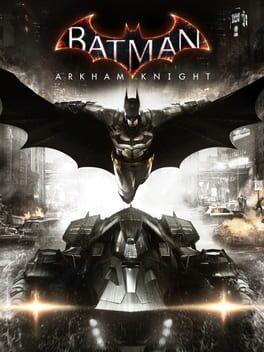
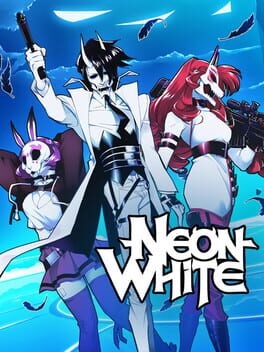
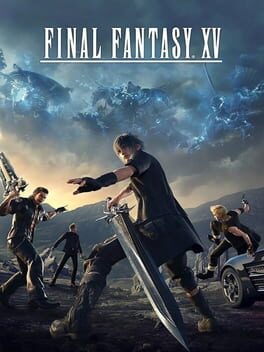

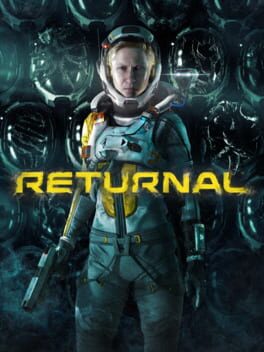

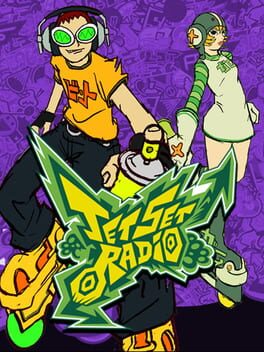
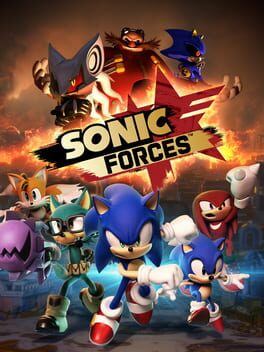


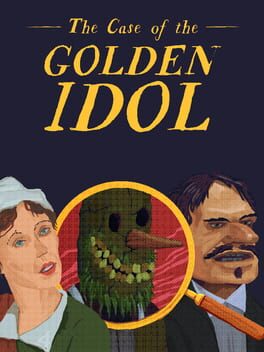
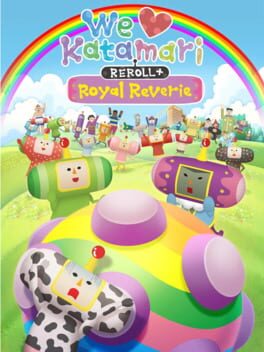
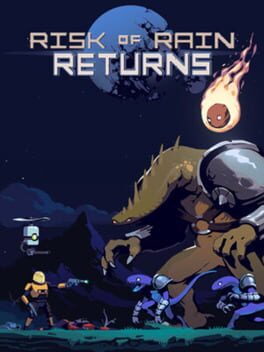
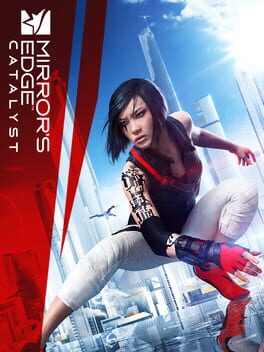

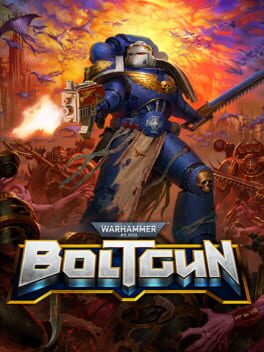
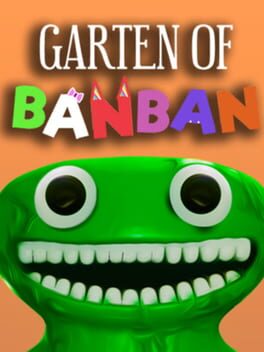

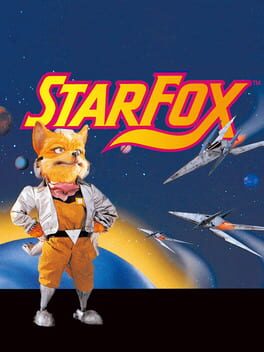

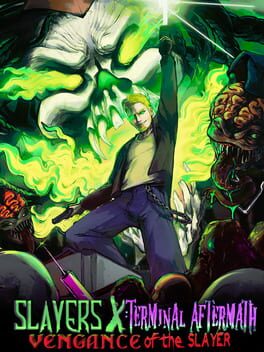

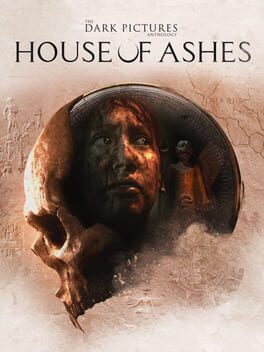
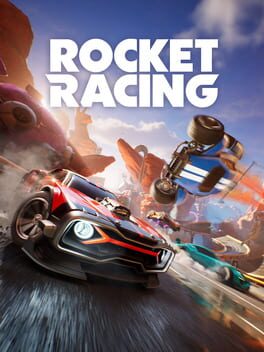

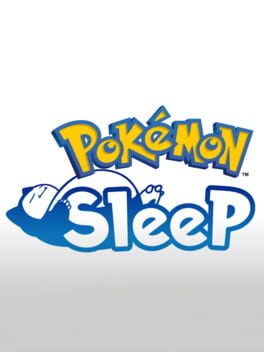
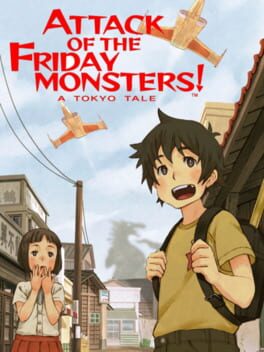
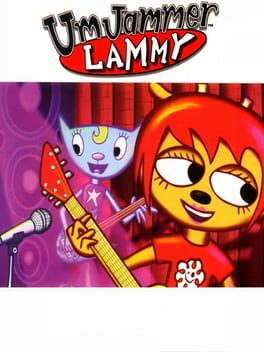
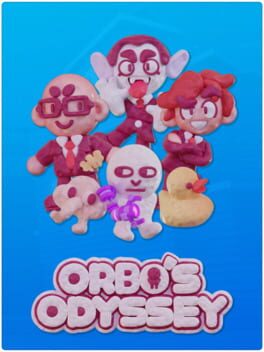


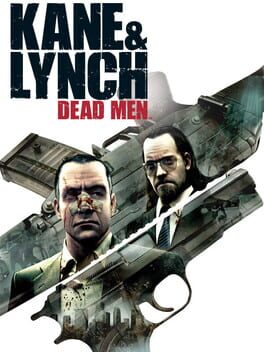

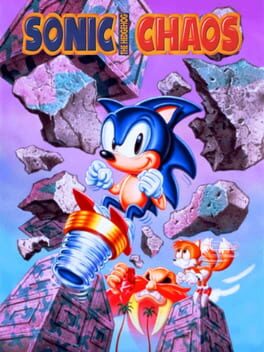
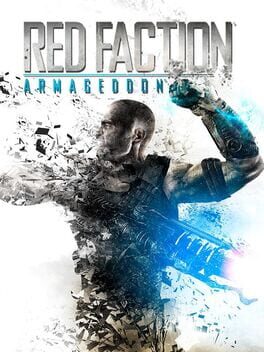
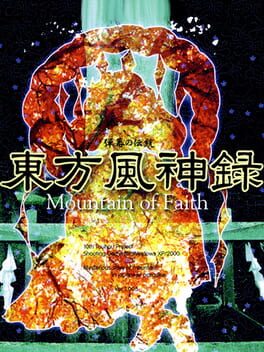
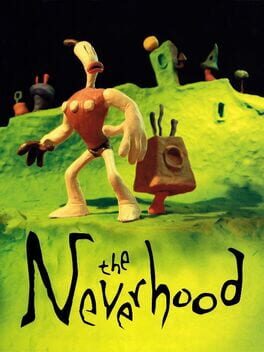
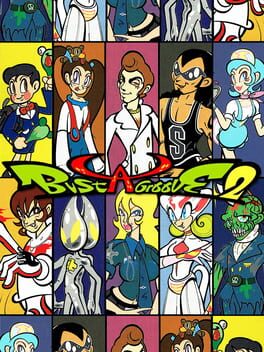

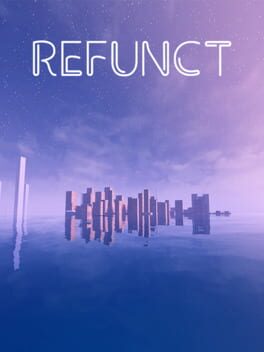
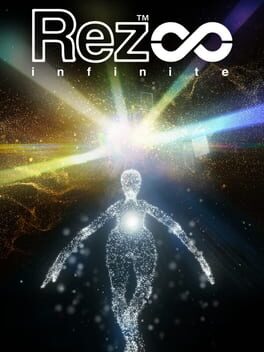

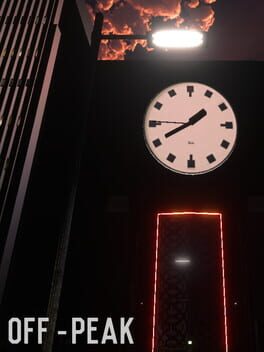

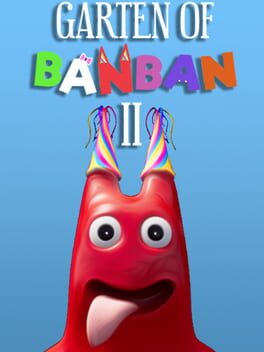
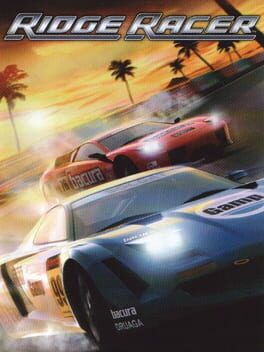
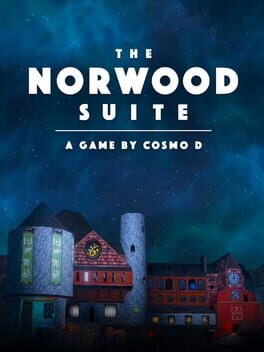
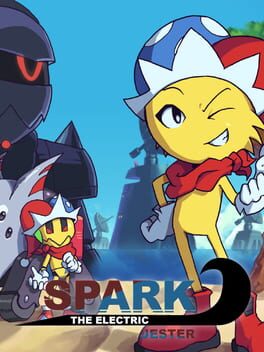
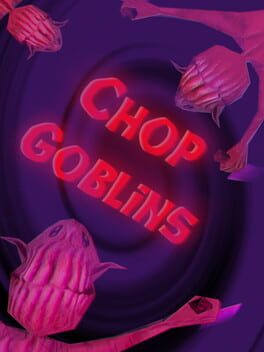
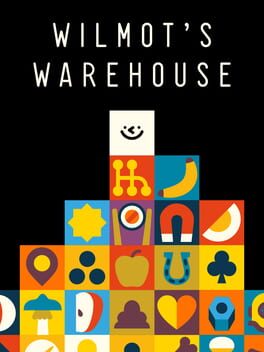
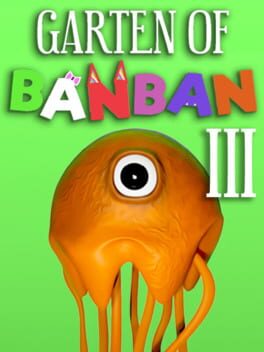

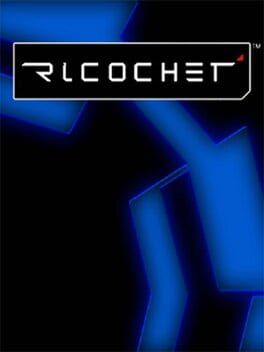
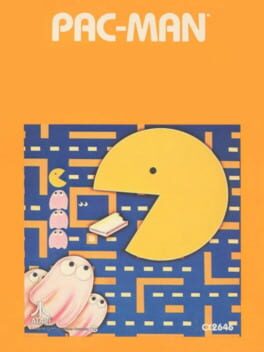
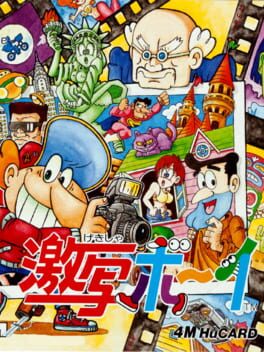
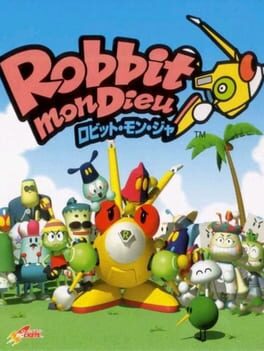
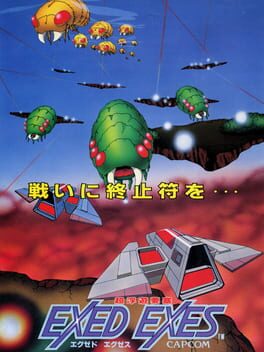
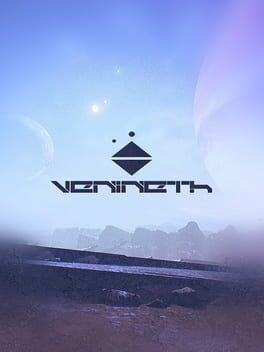
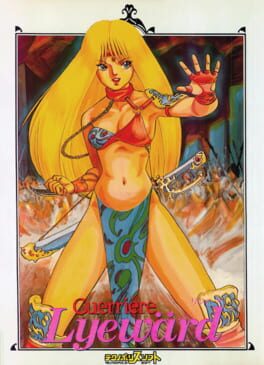
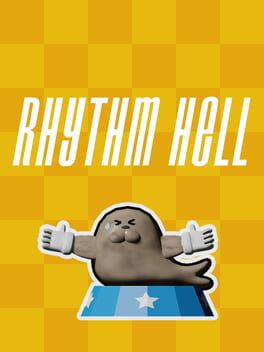
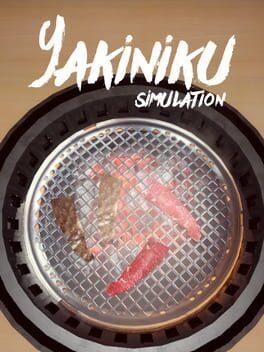
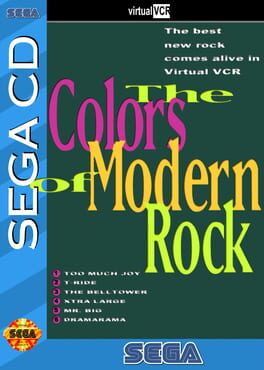
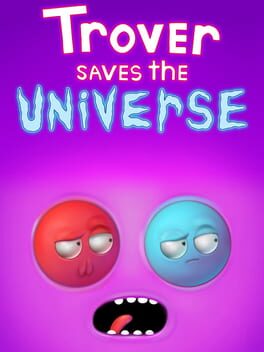
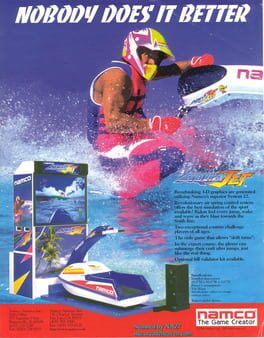
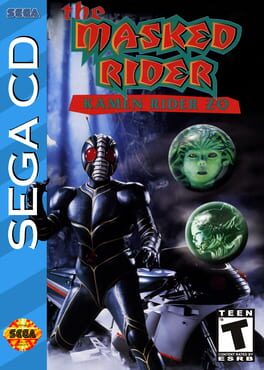
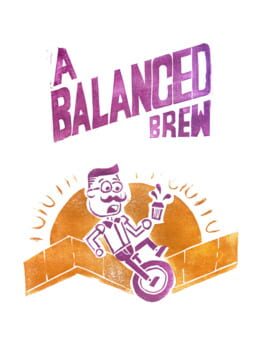

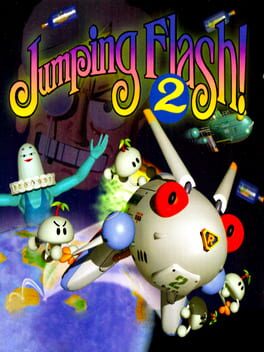
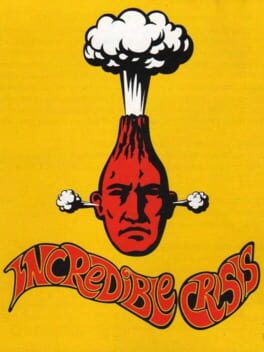
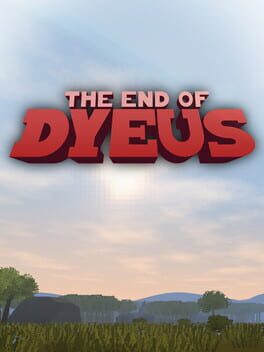
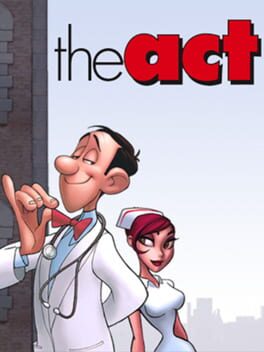


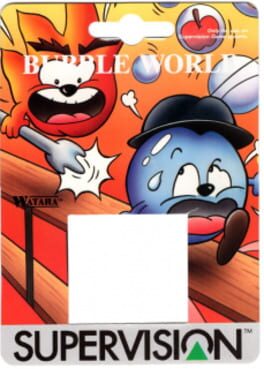

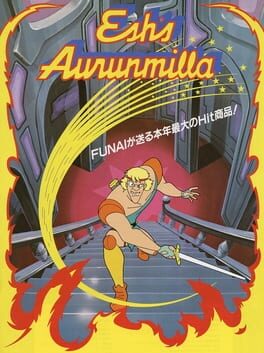
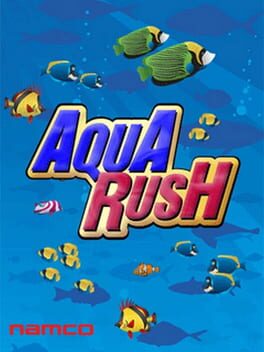

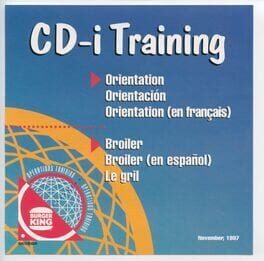
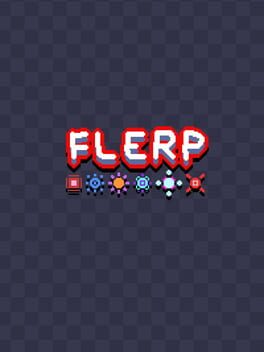
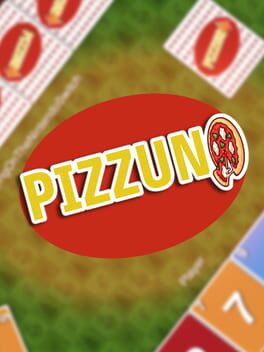
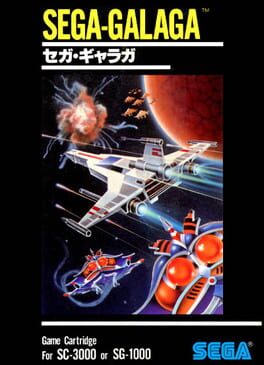
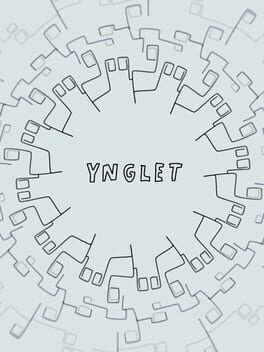
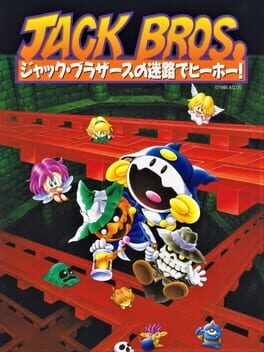
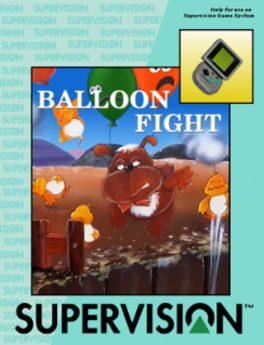

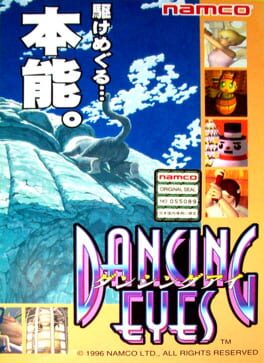
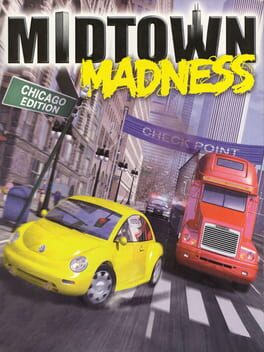
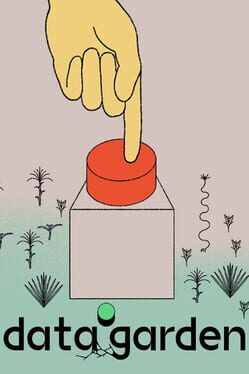
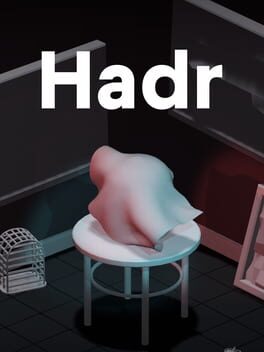
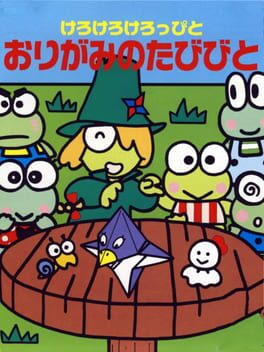
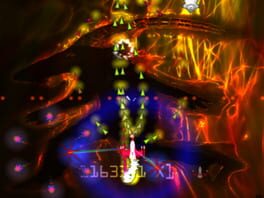
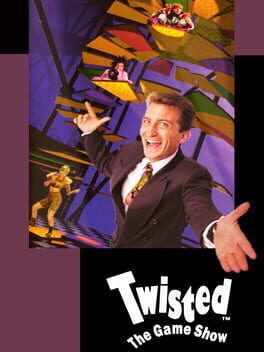
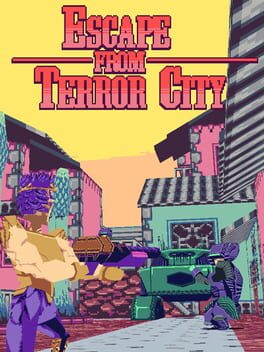
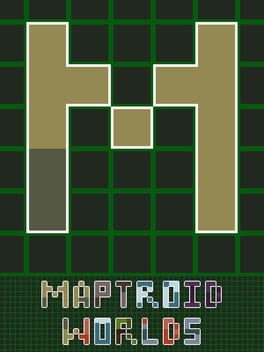
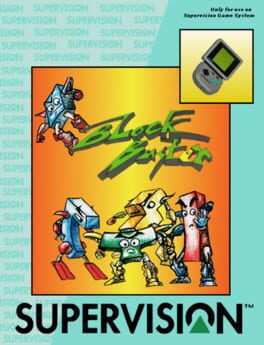
DeemonAndGames
4 months ago
For real tho I'm so glad you made this, I didn't even know you made a follow up to your 177 review so early in the year until I just saw it here, same things goes for a ton of reviews I hadn't checked out till now. Amazing year full of amazing reviews, that's something that I could say about a ton of the talented people on here (which is a lot) but your works are always a fantastic read and an inspiration for me and I'm sure also for many others. Excellent work!